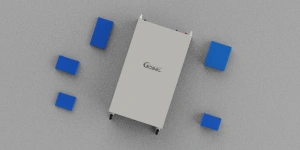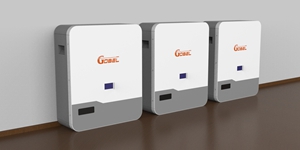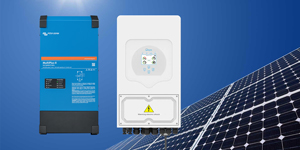Battery Pack Information Lookup
Get Data of Your Gobel Power Battery
Decode
GP-SR1-PC314 Premium Example: GPEV314H240921R1012
GP-SR1-JK314 Standard Example: GPEV314M250109R1001
GP-SR1-JK314 Standard Example: GPGT314L250510R1011
GP-SR1-JK314 Standard Example: GPBT314M250926R1003
GP-SR1-JK314 Standard Example: GPCN314M250929R1003
GP-SR3-PC100 Example: GPEV100H240930R1003
GP-LA12-280AH Premium Example: GDEV280H240307R1008
GP-LA12-280AH Standard Example: GDHC280H240312R1401
More Examples
| SN | Capacity (Ah) | Max Charge Voltage (V) | Min Discharge Voltage (V) | BMS |
|---|---|---|---|---|
| GPEV314H241114R1010 | 326.00 | 57.99 | 41.72 | GP-PC200 BMS |
| GPEV280H231030R1013 | 294.00 | 56.03 | 43.58 | GP-PC200 BMS |
| GPEV314H250507R1012 | 329.00 | 57.85 | 41.29 | GP-PC200 BMS |
| GPEV314H250527R1020 | 332.00 | 57.99 | 41.69 | GP-JK200 BMS |
| GPEV314H250731R1005 | 325.00 | 58.00 | 43.50 | GP-PC200 BMS |
| GPEV314H250224R1006 | 326.00 | 57.05 | 43.53 | GP-PC200 BMS |
| GPEV314H250527R1008 | 332.00 | 58.01 | 41.85 | GP-JK200 BMS |
| GPHC280H240413R1201 | 293.00 | 57.18 | 44.44 | GP-PC200 BMS |
| GPEV280H240620R1010 | 303.00 | 57.97 | 41.78 | GP-PC200 BMS |
| GPRP280L231012R1002 | 293.00 | 57.94 | 40.25 | GP-PC200 BMS |
| GPEV280H241014R1012 | 306.00 | 57.14 | 41.40 | GP-PC200 BMS |
| GPEV280H240520R1013 | 302.00 | 57.99 | 42.74 | GP-PC200 BMS |
| GPEV100H240930R1019 | 105.00 | 57.99 | 40.91 | GP-PC100 BMS |
| GPEV314H250218R1015 | 329.00 | 57.80 | 42.25 | GP-PC200 BMS |
| GPEV314H250616R1013 | 326.00 | 57.93 | 40.33 | GP-PC200 BMS |
| GPEV100H250521R1006 | 104.00 | 57.89 | 41.65 | GP-PC100 BMS |
| GPEV280L230921R2101 | 288.00 | 57.86 | 41.18 | GP-PC200 BMS |
| GPHC280H241021R2901 | 293.00 | 57.11 | 42.44 | GP-JK200 BMS |
| GPHC280H240506R1017 | 293.00 | 57.24 | 41.49 | GP-PC200 BMS |
| GPEV314H250917R1002 | 327.00 | 57.99 | 41.27 | GP-PC200 BMS |
Specification of The Battery
Pack SN:GPEV280H241010R1002
Pack Type: 51.2V LiFePO4 Battery
Pack Grade: Premium
BMS Type: GP-PC200 BMS
Balancer: 4A Bluetooth Active Balancer
Heater: Without Heater
Cell Type: EVE LF280K
Cell Grade: HSEV
Cells Connection: 16S1P
Pack Test Result
Full Capacity: 305.00 Ah (15.62 kWh)
Max Charge Voltage: 57.87 V
Min Discharge Voltage: 42.35 V
Charge Test Steps
- Charging at a constant current of 100A, with a maximum charging voltage of 55.5V.
- Charging at a constant voltage of 55.5V, with a cutoff current of 40A.
- Charging at a constant current of 40A, with a maximum charging voltage of 58V.
- Document the maximum charging voltage when the voltage of a single cell reaches 3.65V.
- * Tested without deliberated active balance procedure.
- Discharging at a constant current of 100A.
- Document the minimum discharging voltage when the voltage of a single cell reaches 2.5V.
- * Please be aware that the charge/discharge curve and capacity of batteries can vary with changing temperatures throughout the seasons. In winter, tested capacity will be relatively lower.
Charge/Discharge Curve
(Based on GPEV280H241010R1002 Test Data)
Cells Information
| Cell Id | QR | Capacity (Ah) | OCV1 (mV) | OCV2 (mV) | OCV3 (mV) | RI1 (mΩ) | RI2 (mΩ) | RI3 (mΩ) | Thick (mm) | Test Date | |
|---|---|---|---|---|---|---|---|---|---|---|---|
| 1 | 1 | 04QCB76G57603JE710008361 | 312.72 | 2,796.0 | 2,792.4 | 3,297.6 | 0.1549 | 0.1555 | 0.1541 | 71.59 | 2024-07-29 |
| 2 | 12 | 04QCB76G51303JE6T0004408 | 312.71 | 2,796.7 | 2,794.6 | 3,297.8 | 0.1531 | 0.1544 | 0.1503 | 71.63 | 2024-07-29 |
| 3 | 14 | 04QCB76G27303JE6F0001549 | 313.69 | 2,799.2 | 2,795.3 | 3,297.2 | 0.1560 | 0.1568 | 0.1550 | 72.43 | 2024-07-29 |
| 4 | 16 | 04QCB76G55403JE6V0000987 | 312.80 | 2,782.8 | 2,778.7 | 3,297.7 | 0.1533 | 0.1550 | 0.1514 | 71.70 | 2024-07-29 |
| 5 | 17 | 04QCB76G27303JE6V0000235 | 312.05 | 2,784.9 | 2,780.0 | 3,297.5 | 0.1554 | 0.1558 | 0.1502 | 72.02 | 2024-07-29 |
| 6 | 18 | 04QCB76G26803JE720000958 | 312.90 | 2,792.6 | 2,787.6 | 3,297.6 | 0.1555 | 0.1574 | 0.1509 | 71.58 | 2024-07-29 |
| 7 | 26 | 04QCB76G27303JE6W0006086 | 312.74 | 2,798.8 | 2,794.2 | 3,297.5 | 0.1571 | 0.1586 | 0.1527 | 71.97 | 2024-07-29 |
| 8 | 35 | 04QCB76G28003JE6B0007509 | 311.28 | 2,790.6 | 2,789.5 | 3,297.4 | 0.1567 | 0.1569 | 0.1546 | 72.68 | 2024-07-29 |
| 9 | 36 | 04QCB76G27303JE6G0009175 | 312.00 | 2,793.3 | 2,790.3 | 3,297.0 | 0.1542 | 0.1566 | 0.1543 | 71.81 | 2024-07-29 |
| 10 | 45 | 04QCB76G27603JE6L0011921 | 314.30 | 2,801.4 | 2,795.9 | 3,297.3 | 0.1575 | 0.1579 | 0.1527 | 71.96 | 2024-07-29 |
| 11 | 47 | 04QCB76G27203JE6E0000306 | 311.60 | 2,790.7 | 2,789.5 | 3,297.9 | 0.1586 | 0.1586 | 0.1542 | 71.99 | 2024-07-29 |
| 12 | 48 | 04QCB76G27403JE6G0000455 | 312.97 | 2,795.8 | 2,791.4 | 3,297.2 | 0.1564 | 0.1579 | 0.1519 | 72.15 | 2024-07-29 |
| 13 | 53 | 04QCB76G51303JE6T0003296 | 312.80 | 2,798.9 | 2,796.9 | 3,297.8 | 0.1542 | 0.1554 | 0.1528 | 71.76 | 2024-07-29 |
| 14 | 55 | 04QCB76G51303JE6T0007958 | 311.98 | 2,798.9 | 2,796.3 | 3,297.9 | 0.1544 | 0.1560 | 0.1503 | 71.88 | 2024-07-29 |
| 15 | 56 | 04QCB76G27203JE6V0011240 | 312.78 | 2,790.1 | 2,788.8 | 3,297.8 | 0.1561 | 0.1573 | 0.1516 | 71.83 | 2024-07-29 |
| 16 | 63 | 04QCB76G27203JE6E0000313 | 311.68 | 2,790.8 | 2,789.3 | 3,297.3 | 0.1553 | 0.1557 | 0.1530 | 72.47 | 2024-07-29 |
Why Max Charge Voltage and Min Discharge Voltage Matter
For LiFePO₄ batteries, Max Charge Voltage and Min Discharge Voltage are not just technical data — they reflect the consistency and balance of every single cell inside the pack.
When all cells reach the charging and discharging limits almost at the same time, it shows that the pack is perfectly matched, with highly uniform voltage and internal resistance. This means better efficiency, higher usable capacity, and a much longer lifespan.
At our factory, every battery pack is tested individually, and its Max Charge Voltage and Min Discharge Voltage results are published on our website for full transparency.
Most manufacturers do not share such detailed data — but we do, because we believe:
-- Real quality can be proven with real numbers

 Europe Warehouse
Europe Warehouse










